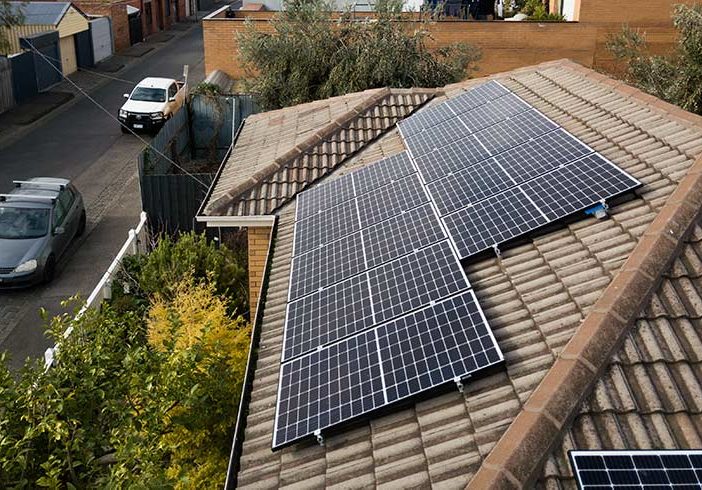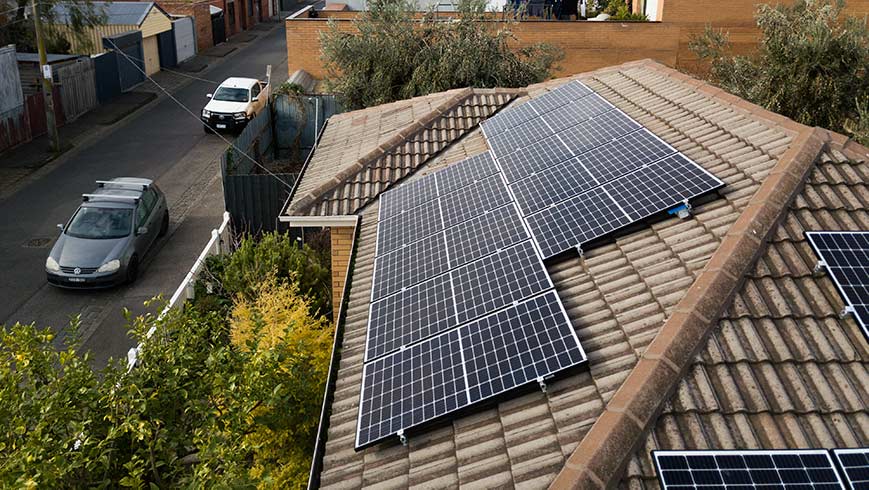
Endeavour Energy has launched a new, AI-powered flexible export system that will allow rooftop solar customers to export more energy to the grid than the current 5 kilowatt (kW) cap, saving them money while maintaining grid stability.
The company says its new service, launching in New South Wales only, could save households up to $200 per year on their power bills.
“Until now, NSW households have faced fixed export limits that restrict how much solar they can send back to the grid, leaving large amounts of solar electricity unused,” said Endeavour Energy CEO Guy Chalkley.
A solar export limit is a maximum quantity of energy that a household solar system can feed back into the grid at a given time, and is generally set by the local power provider. In most states, this limit is set at around 5kW, while the average size of new systems being installed currently sits at around 10kW.
Fixed export limits are used to as a way to control the amount of solar energy being fed back to the grid and avoid destabilising fluctuations in voltage or frequency, power surges or blackouts.
This means that at peak productivity hours – during the middle of the day when the sun is at its highest and electricity usage in the home plunges – solar-powered homes often generate more energy than they can use or export.
Industry experts have criticised the rigidity of the 5kW export limit, which was introduced in the 2000s and has remained static, since, despite major developments in solar technology.
Other tools being considered to manage the huge amounts of solar being exported to the grid during the day include the introduction of a “sun tax” – charging households to send their electrons to the grid during peak hours.
This highly controversial approach has been taken up by some NSW networks, which will be rolling out various versions of export tariffs in full from July.
The idea is that consumers will seek to avoid paying the tax by using more of their daytime solar as it is generated, or by investing in a home battery to store it for use later in the day.
Flexible exports, on the other hand, involve the installation of smart software that allows a household to sell as much electricity to the grid as the capacity of the distribution network will allow at a given time.
Endeavour says its technology will allow eligible customers to nearly double the amount of energy they can export to the grid, from 5kW up to 10kW for 95 per cent of the year, with the tech only limiting exports if grid stability is actually at risk.
The new technology being offered in NSW by Endeavour is not the first in Australia to offer flexible exports – South Australia’s major electricity provider SA Power offers flexible exports as standard, using software that allows them to forecast the networks’ hosting capacity 24 hours in advance on a five-minute basis, allowing them to manage exports of up to 10kW per inverter.
It looks like Endeavour’s new Flexible Exports tech may have even more granular data about grid flow, with real-time reporting and the use of AI, though Colin Crisafulli, general manager at Endeavour Energy, says the network’s system is based in large part on SA Power’s pioneering system.
“We are leveraging the same core technology (CSIP-aus communications protocol) that was pioneered in SA,” Crisafulli said.
“Endeavour Energy learnt a lot from SA Power Networks and thanks them for their collaboration to enable flexible exports for our customers.”
Using technology built by partners Gridsight and SwitchDin, the AI-powered system uses data from 700,000 monitoring points across the grid to predict solar energy flows, meaning it can adjust exports in real time based on conditions across the grid.
The service will gradually roll out to eligible customers later this year after its 100-customer pilot program proved successful in the state.
Crisafulli said the company anticipates the service could contribute 600 MW of additional renewable energy capacity, enough to power 75,000 homes for a year.
“This service will generate over $100 million in additional solar exports, further accelerating Australia’s transition to a cleaner, more resilient energy network,” Crisafulli said.
The service will be available to existing customers as well as new ones.
“Customers can volunteer to participate if they have CSIP-aus compatible inverters, net export metering installed onsite, and are constrained by the fixed export limit,” Crisafulli said. “This is typically single phase customers with systems greater than 5kW.”
No new hardware is required nor a change of retailer, Crisafulli says.
According to Dr Gabrielle Kuiper, a DER specialist and Director at The Superpower Institute, the lack of flexible exports in Australia cost consumers $35 million in 2023 alone, with that figure expected to balloon to $211 million over the next three years.
She has advocated for a nationwide, coherent installation of flexible exports to allow solar customers across the country to benefit more from their systems.
“We want to make the most of all of the solar that’s being generated on rooftops around the country, it’s a fantastic resource and if you just use static limits or crude measures then you’re not optimizing the use of that solar energy for the grid as a whole,” says Kuiper.
But while she welcomed the news, Kuiper said a more coordinated approach was needed across Australia to harness the benefits of flexible exports and not leave customers in the lurch.
“The big challenge is what will be done to ensure that all households around the country which are installing solar have access to flexible exports, and in a way that’s consistent as possible,” she said.
“At the moment we’ve got this very piecemeal rollout and that’s a problem, particularly because that means that equipment manufacturers are having to develop technology and processes to comply with different flexible exports in different DNSP areas, that just adds to the cost of a solar system for households when those communication and compliance pieces are different in every state.
“We really need preferably the federal government to step up and take action to ensure we have consistent, flexible exports across the entire national electricity market, preferably within the year.”

